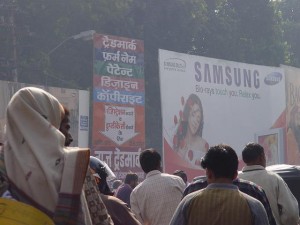Samsung Moves: A Portrait of Struggles
 Corporation ‘Samsung’ has been engaged in continuous struggles with the market, labour, the state, and society as a whole within which it develops. This article is a portrait of the struggles: the struggles that were made by every step of the movement of Samsung and made Samsung move again. It captures the way in which an individual capital, a very progressive one in many senses of modern management and corporate strategy, absorbs all possible social resources, including human sweat, soul, and lives, and turns them into corporate energy on which a miraculous capital accumulation has been made possible. Each part of its history will describe Samsung’s efforts to move out of old challenges, and new challenges created by its own moves. While it is written as a short corporate history, it is a corporate history written in labour’s language. In other words, it is a corporate history in relation to labour. This article particularly emphasises the other side of a multinational corporation’s history, namely the way in which ‘work’ is recomposed by mobile capital in Asia, tracing the interaction between multinational companies and local labour. The history of Samsung therefore starts with Korean labour in 1938 and ends with Asian labour in 2006.
Corporation ‘Samsung’ has been engaged in continuous struggles with the market, labour, the state, and society as a whole within which it develops. This article is a portrait of the struggles: the struggles that were made by every step of the movement of Samsung and made Samsung move again. It captures the way in which an individual capital, a very progressive one in many senses of modern management and corporate strategy, absorbs all possible social resources, including human sweat, soul, and lives, and turns them into corporate energy on which a miraculous capital accumulation has been made possible. Each part of its history will describe Samsung’s efforts to move out of old challenges, and new challenges created by its own moves. While it is written as a short corporate history, it is a corporate history written in labour’s language. In other words, it is a corporate history in relation to labour. This article particularly emphasises the other side of a multinational corporation’s history, namely the way in which ‘work’ is recomposed by mobile capital in Asia, tracing the interaction between multinational companies and local labour. The history of Samsung therefore starts with Korean labour in 1938 and ends with Asian labour in 2006.
The analysis will show how Samsung gradually grasps its own workers’ soul both by helping the workers to realise their own small dreams with superior economic compensation and by threatening them not to take their soul back. In addition, drawing on the evolution of Samsung Electronics and its cohorts within the Samsung conglomerates, in Korea, Indonesia, Thailand, Malaysia, India and China, this article shows how Samsung organises its labour globally and locally along the hierarchical ladder of the production chain to maximise its profit and realise its own corporate dream. I want to reiterate, to prevent misunderstanding, that this article does not aim merely to show miserable, dramatic, and sensational physical exploitation stories that most readers might expect from literature on Asian labour. Focusing on miserable stories is often a consequence of lazy and ‘sitting-back’ research ethics in the labour movement since it gives us not much to analyse. Therefore, the usual tactics used by incapable and short-sighted corporations are not at the centre of our stories. However, this article will show how Samsung divides workers who, at the core, take
themselves as labour aristocracy and are ready to be the soul of Samsung, and who at the periphery are struggling for daily life. Indeed, it shows that even advanced capital does not hesitate to utilise brutal methods to tighten control over workers when they try to reclaim the soul. To this end, this case of Samsung will help us to understand how the world of living and labour for the Asian people has changed
ever since their involvement in multinational operation and expansion of capital. By doing so, it will enlighten the impact of the increasing mobility of capital on the pathway of the national development that is increasingly subsumed to the logic of the reproduction of the social conditions of capital accumulation. For whole article Samsung Chapter 1 – Chang 2006